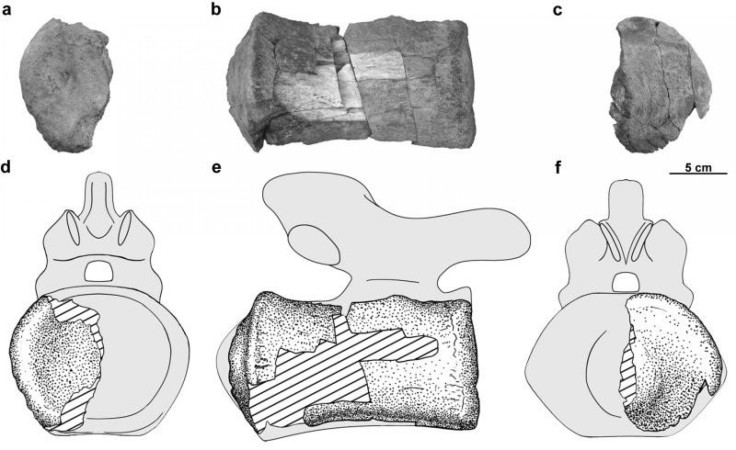First Antarctic Plant-Eating Dinosaur Fossil Found

Researchers in Argentina have, for the first time, identified remains of plant-eating dinosaurs in Antarctica. The research team suggests that these large-bodied sauropods or advanced titanosaurs were widespread during the Late Cretaceous era.
The study indicates that giant plant-eating dinosaurs roamed Antarctica long before the advent of penguins in the natural landscape of the region.
The discovery reported in the German journal Naturwissenschaften -- The Science of Nature -- shows the existence of a sauropod dinosaur from the Antarctic land mass for the first time.
The report provides a detailed description of an incomplete middle-tail vertebra recovered from James Ross Island. Until now, sauropods, one of the most diverse and geographically widespread classes of plant-eating dinosaurs, have been recovered from most continents, except Antarctica.
Although other important dinosaur discoveries have been made in Antarctica in the last two decades, especially in the James Ross Basin, the remains of the sauropod have been traced here for the very first time. Titanosaurs, also called sauropods, were four-legged herbivorous dinosaurs with long necks and tails. The remains of some 150 species of sauropods have been found around the world.
Dr. Ignacio Alejandro Cerda from CONICET in Argentina and his team say the new discovery throws light on the specific size and morphology of the specimen, including its distinctive ball and socket joints, and have identified it as an advanced titanosaur.
These titanosaurs originated during the Early Cretaceous period and were the predominant group of sauropod dinosaurs until the extinction of all non-bird dinosaurs at the end of the Cretaceous.
Although these were the more widespread and successful species among sauropods, their origin and dispersion are not completely understood.
The authors conclude: Our discovery, and subsequent report, of these sauropod dinosaur remains from Antarctica improves our current knowledge of the dinosaurian faunas during the Late Cretaceous on this continent.
The new specimen consists of a section of vertebrae almost 20cm long, believed to have come from the middle third of the dinosaur's tail.
The Argentinian research team has categorized the new specimen as belonging to a lithostrotian titanosaur from the late Cretaceous period around 70 million years ago. The Cretaceous Period spanned 99.6-65.5 million years ago, and ended with the extinction of the dinosaurs.
Lead author Cerda and colleagues wrote: Our finding indicates that advanced titanosaurs achieved a global distribution at least by the Late Cretaceous. However, the discovery of a single vertebrae fossil was not enough to speculate on the dinosaur's species.
Titanosaurs included the mighty Argentinosaurus, which may have reached 100 feet in length. Many sauropod remains have been traced across North and South America, Africa, Asia, Australia and Europe in the past, but there is no previous record of sauropoda in Antarctica.
© Copyright IBTimes 2025. All rights reserved.





















